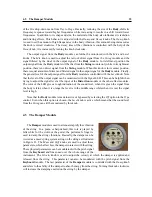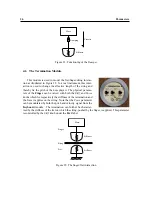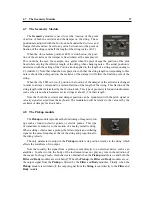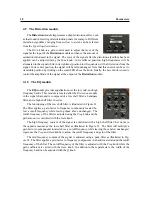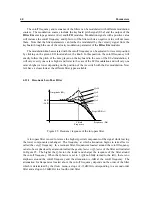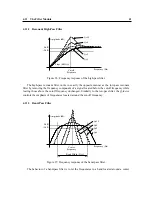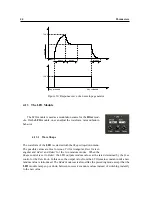
4.18
The Output Effect Section
49
4.17.2
Rhythmic Patterns
The rhythmic pattern is shown on the Pattern display. Different rhythmic presets are available
through the utility menu. Notes will be played as the 16-step display is scanned and the corre-
sponding step is selected (green button on). The little arrow on the top of the display is used to fix
looping points from which the rhythmic pattern will start being played again from the beginning.
Note that when a preset pattern is edited and then the Save Preset command from the File menu
is used, the modified pattern will be saved and reloaded when the corresponding preset is later
selected.
4.17.3
Rate and Synchronization
The rate at which the arpeggiator pattern is scanned is set by the Rate knob or can be synced to the
master clock of the Clock module. The Rate knob will only be effective when the Sync control is
set to Off. When the Sync control in on, the rate is fixed relative to the frequency (tempo) of the
master clock (see 4.18.1) and the value displayed in the Sync control. Sync values range from 1/8
of a quarter note (a thirty-second note) to 16 quarter notes (4 whole notes) where the duration of
the whole note is determined by the value (in BPM) appearing in the Tempo display of the Clock
module. This effect can also be synced to a triplet (t) or a dotted note (d).
4.17.4
Latch mode
The Arpeggiator module is toggled in latch mode by clicking the Latch button to the on position.
In this mode, the Arpeggiator will keep playing its pattern when the notes on the keyboard are
released and until a new chord is played.
4.18
The Output Effect Section
The output effect stage is located at the top row of Panel A of String Studio. This effect stage
allows one to add effects to the sound and record performances on the fly as wave or aiff files and
to synchronize different modules with a host sequencer.
Summary of Contents for STRINGSTUDIO
Page 1: ...USER MANUAL ...

